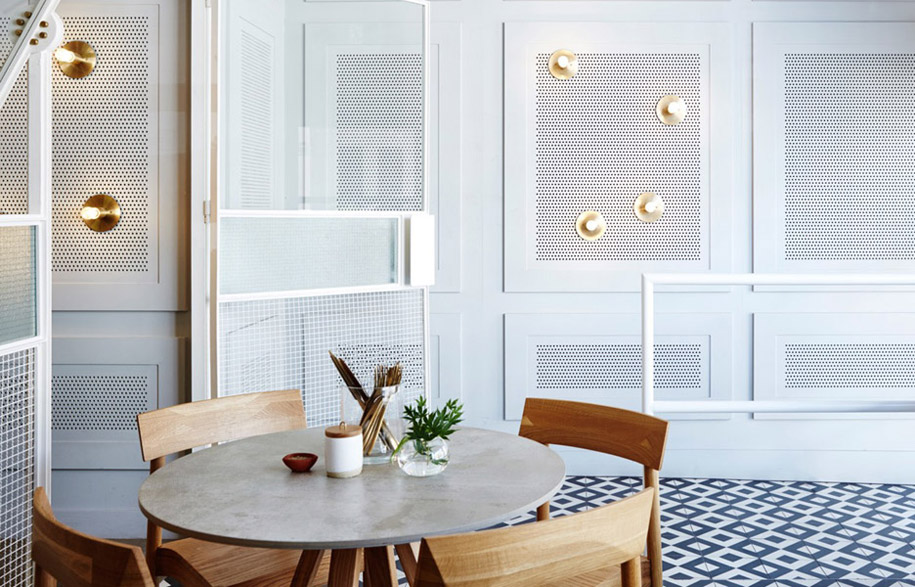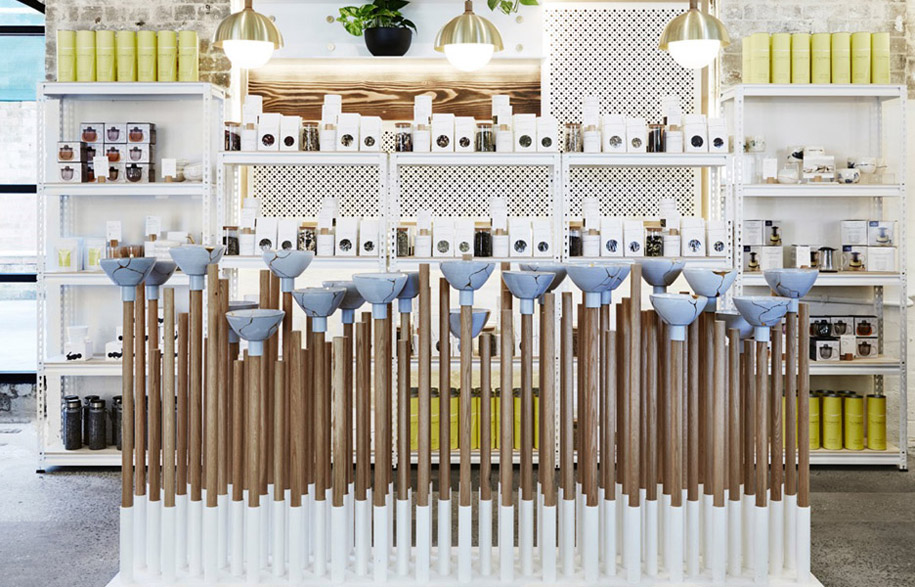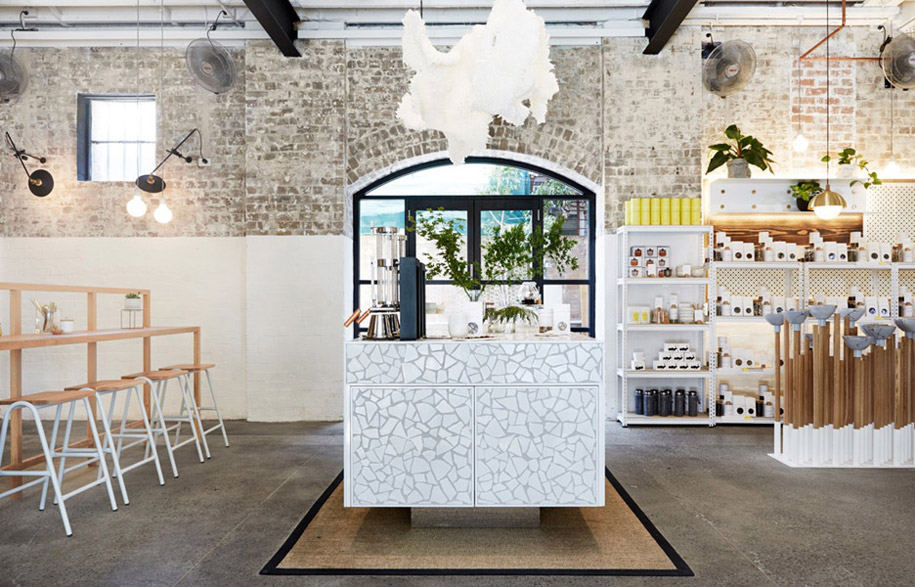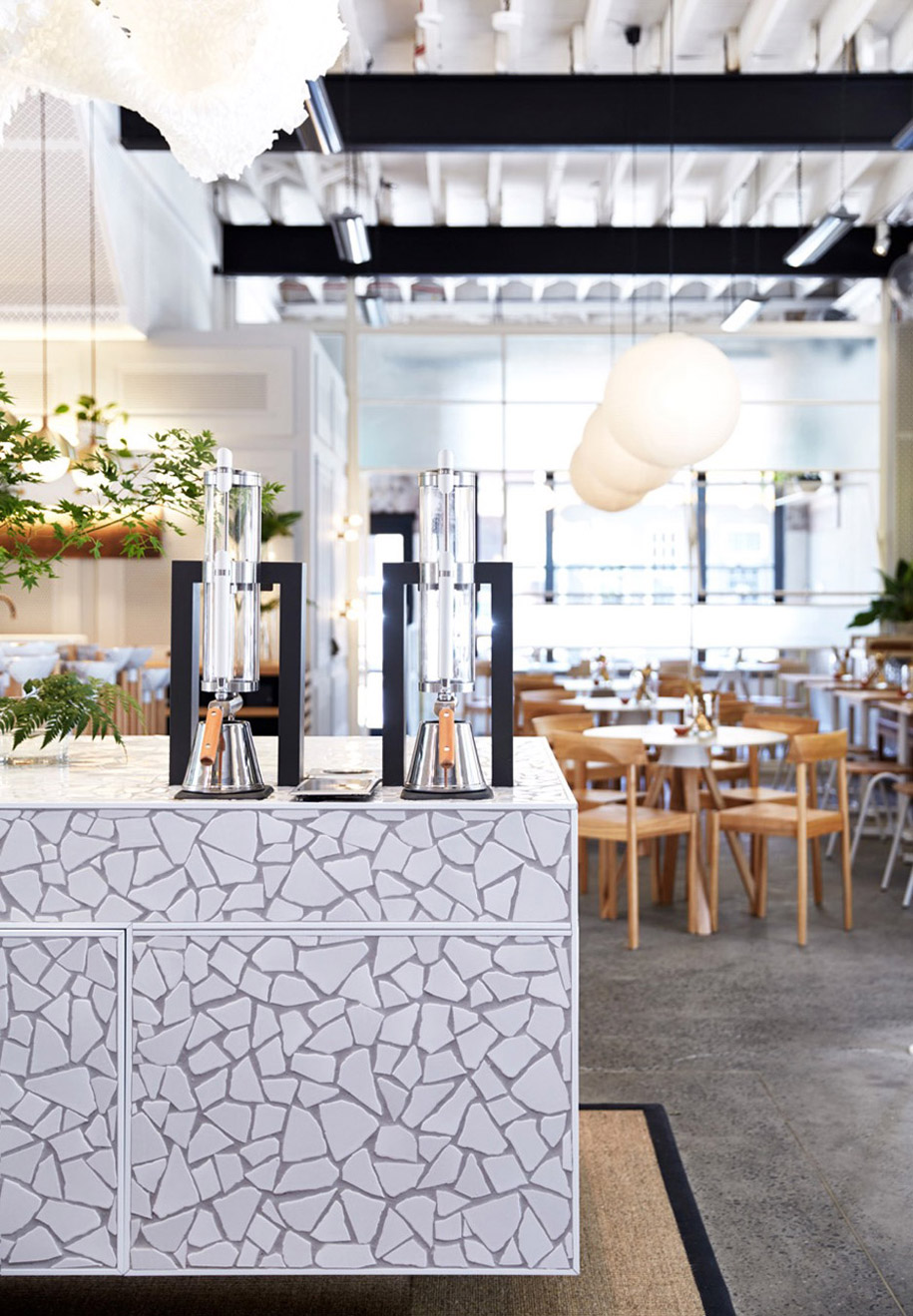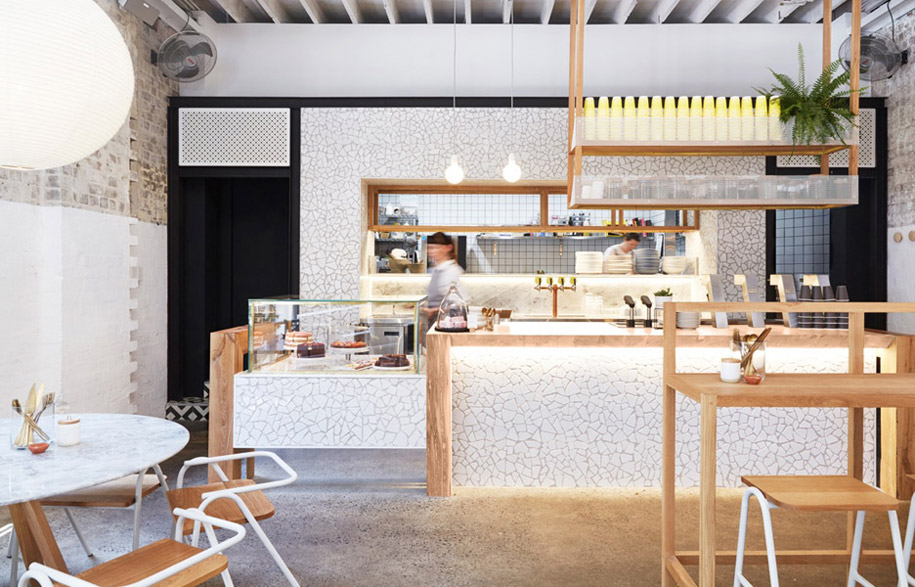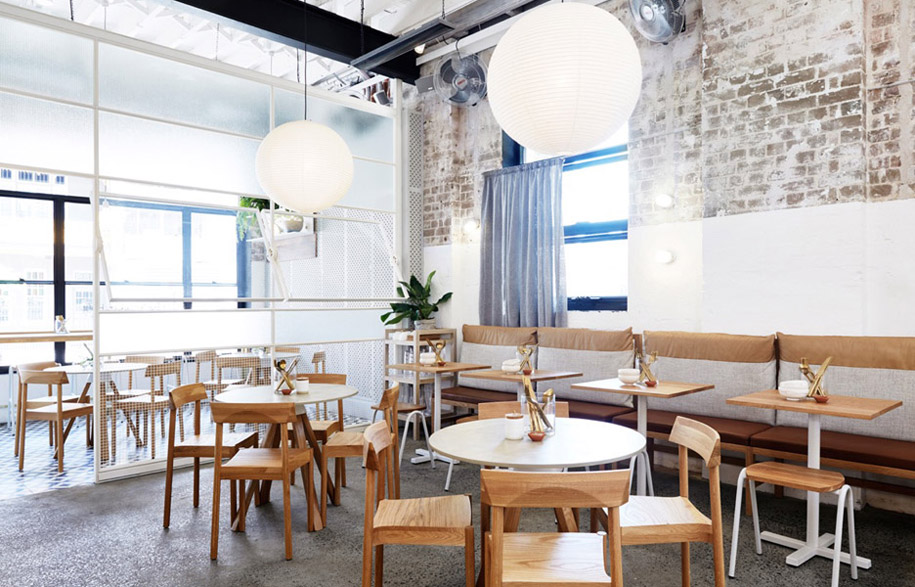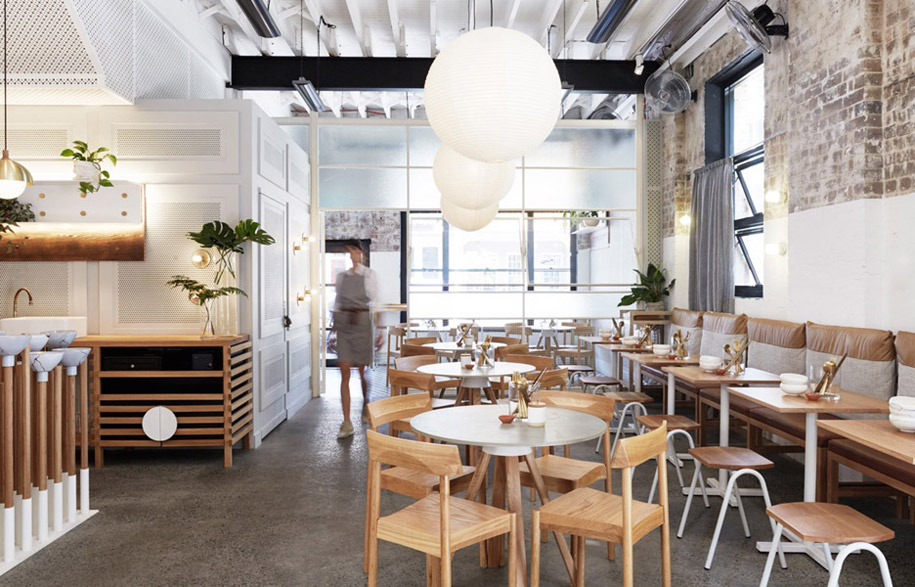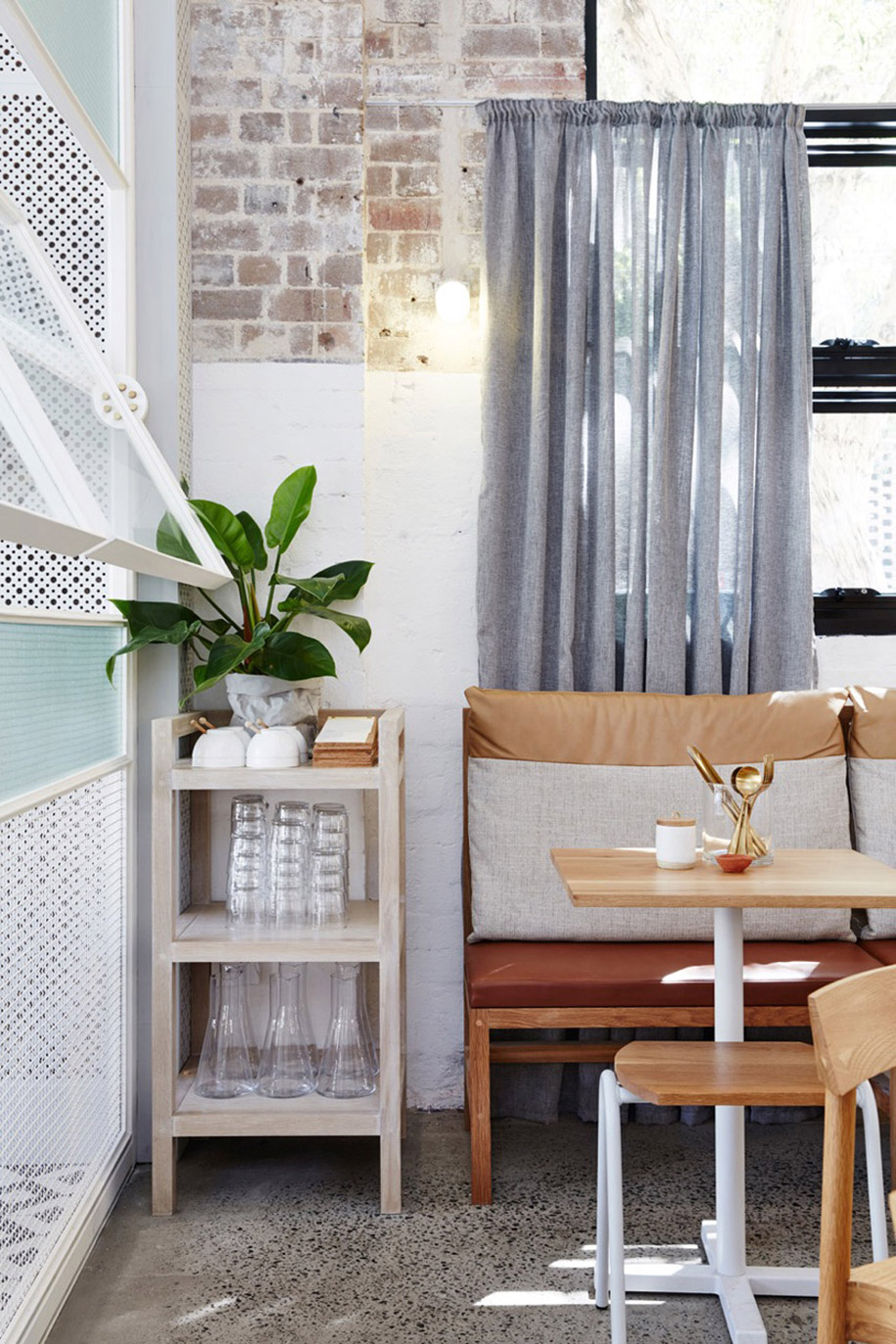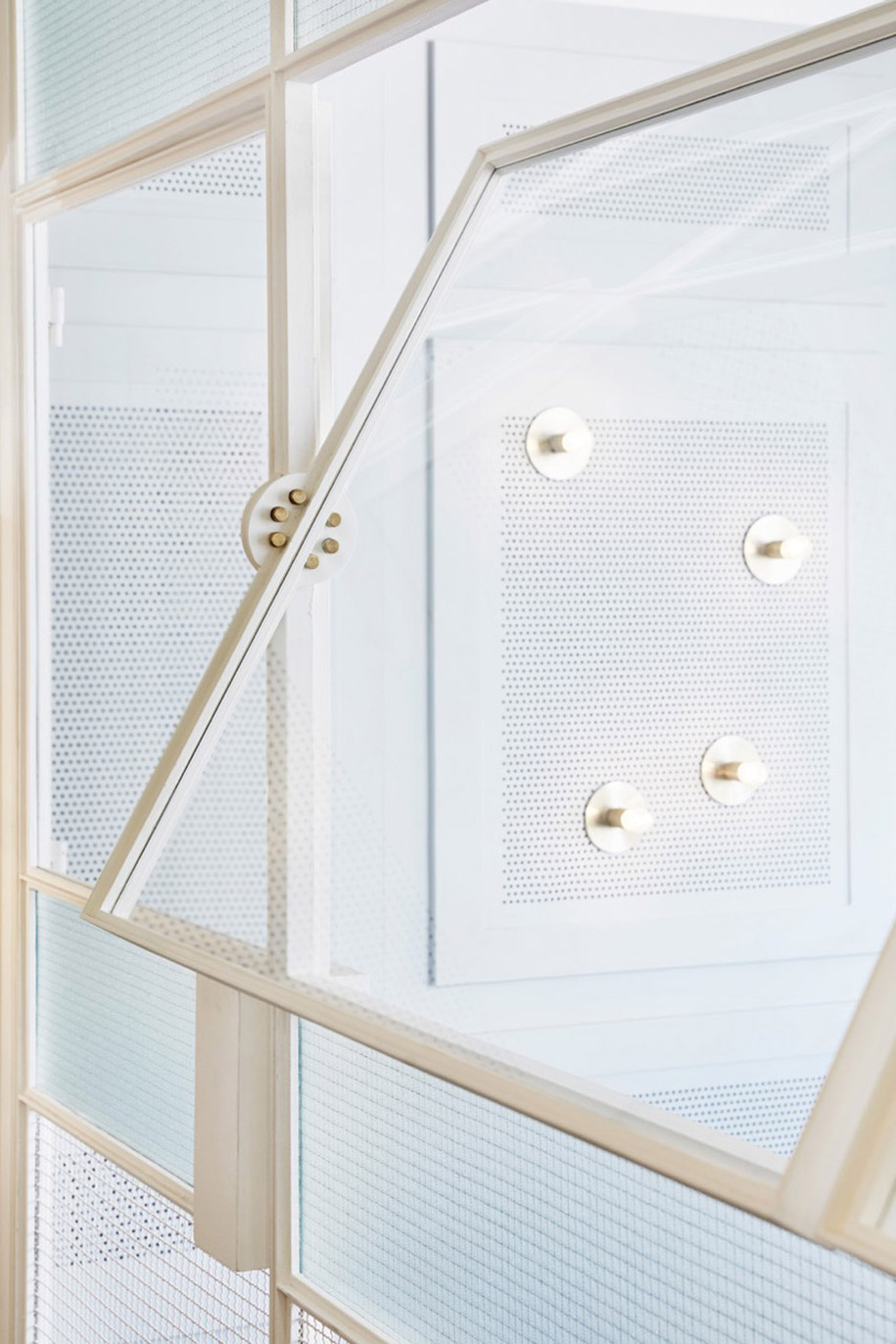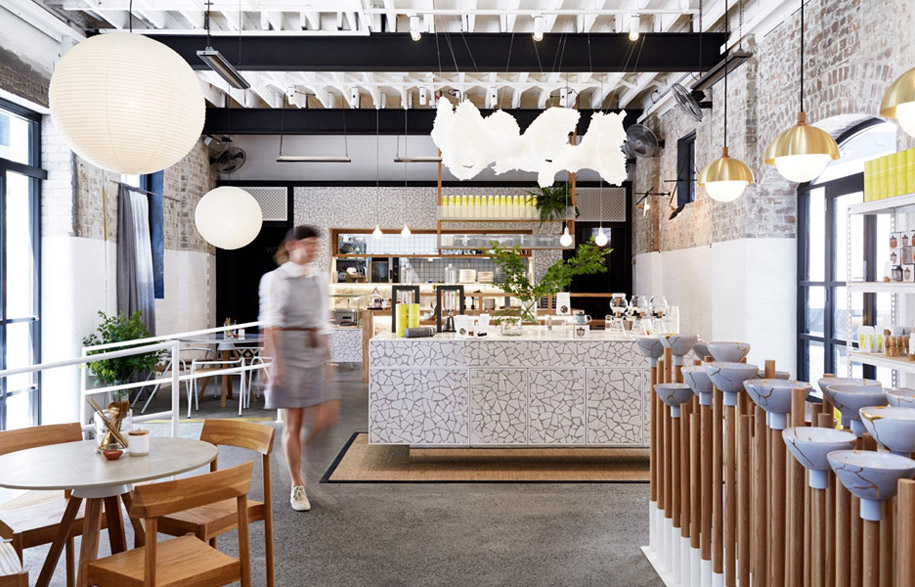The Rabbit Hole pairs the original building’s industrial features with a Japanese design aesthetic and numerous whimsical elements.
Matt Woods took advantage of the present architecture in the design of the space, employing existing timber ceilings and brick walls, which have been since been painted white to reflect the natural light flooding in the space.
“The softening of this masculine architecture is achieved through the white washing of these newly exposed elements,” said Woods. “The addition of enlarged north east facing windows allows light to flood in to the interior.”
The Rabbit Hole is influenced by the Japanese art of Kintsugi, which is based on the celebration of the imperfections in ceramic objects. Matt Woods has created a counter from shards of crushed tiles and a display made of balancing bowls to channel this feeling
“The Japanese art of Kintsugi forms the foundation of the new design elements,” he says “This is most apparent in the specialty tea display where, like spinning plates on top of a circus performers pole, custom designed Kintsugi bowls sit delicately above turned oak timbers.”
A glazed wall separates the smaller area of the space from the wider café, while oak timber was used to create seating throughout the café.
“Other tables are less ostentatious, and are constructed in timber and fibre cement,” says Woods “This contrasting materiality is peppered through out the space, along with a $100 warehouse shelving stand and bespoke joinery items.”
Matt Woods Design
killingmattwoods.com
